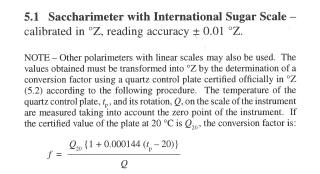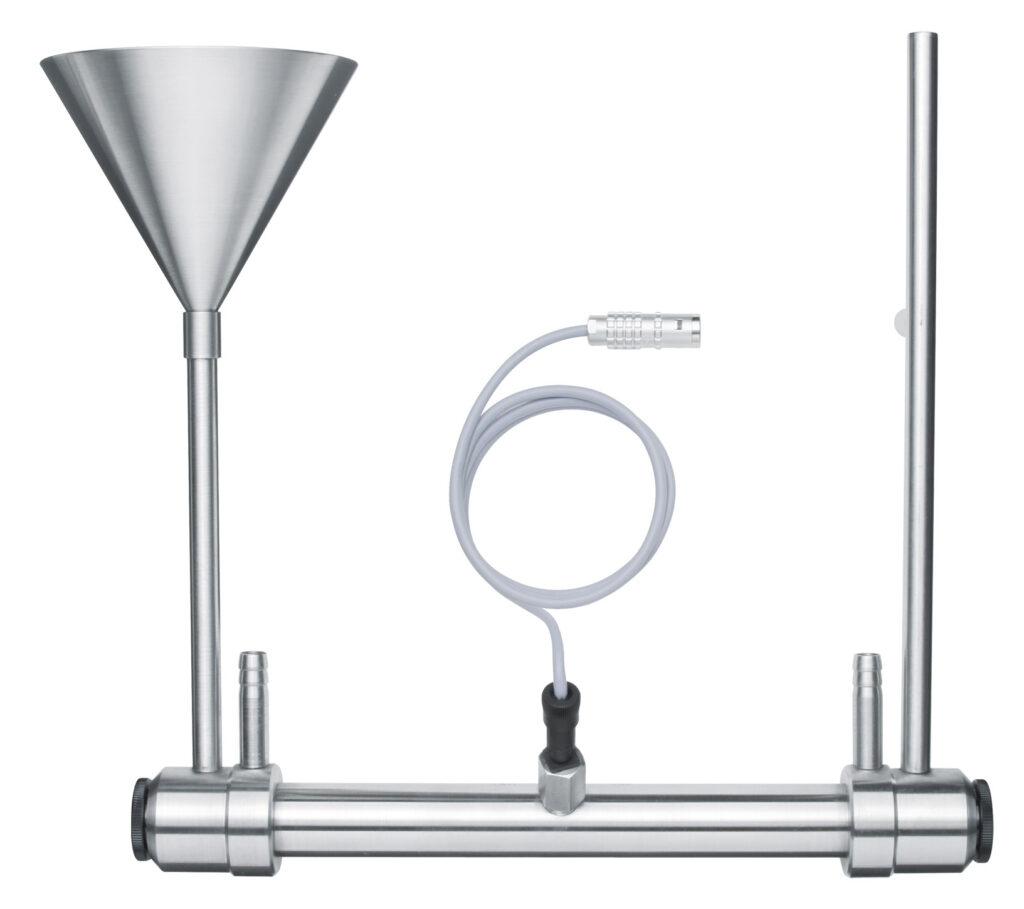ICUMSA® is the only international organization concerned solely with analytical methods for the sugar industry. ICUMSA® “International Commission for Unified Methods of Sugar Analysis” is in charge of constantly improving sugar analysis method based on scientific research and strict quality controls.
The optical rotation of sucrose solution and its dependence on various physical parameters as concentration, wavelength, and temperature is laid down in “Specification and Standard SPS-1”.
The Standard explains how to test raw, intermediate and final products in the sugar industry for Quality control. Under section 5.1 the dependence of the optical rotation of sucrose solution on concentration and temperature is exactly defined. In section 5.2 is the wavelength dependence of the optical rotation is given.

From: ICUMSA® Methods Book 2022, Verlag Dr. Albert Bartens KG, GS2-1 (2022)
page 1 of 6.
Also, strict regulations for the performance of the so called “Polarimetric Saccharimeters” are given. Besides the exact wavelength used in the instrument, the cover glasses of the polarimetric tubes as well as the used materials (glass / steel) and the length are regulated by ICUMSA®.
For correct wavelength adjustment certified Quartz plates are required, which are equipped with a temperature sensor corrected to 20°C according to formula given by ICUMSA®.

From: ICUMSA® Methods Book 2022, Verlag Dr. Albert Bartens KG, SPS-1 (2017) page 6.
In view of all these exact data and prescriptions, it is understood that a polarimetric measurements is perfectly accurate when the value “sample temperature” is properly measured while performing the optical rotation test and when the deviation of the reference temperature of 20°C is taken into account.

From: ICUMSA® Methods Book 2022, Verlag Dr. Albert Bartens KG, p. GS2-1 (2022)
page 2 of 6.
The sample temperature might vary depending on the environment, process conditions or sample room temperature inside the polarimeter. Applying the temperature correction built into the firmware of the polarimeter will make an additional temperature regulation unnecessary when a sucrose solution is measured. It might even be contra productive if a warm or cold sample is filled into a tempered sample tube at e.g. 20°C. This may cause a temperature gradient during the measurement and lead to striation and turbulences in the liquid. The result will be unstable readings and a long duration until the measurement converges to a stable value.
If the cell temperature is kept at a lower temperature then environment, there is also a possibility of cover glasses to get fogged by condensing air humidity. Temperature stress in the cover glasses can also cause additional errors in polarimetric readings due the optical strain.
Summarizing above argumentations, there is no need for temperature stabilization for sugar solutions as long as the cell / solution temperature is measured. In SCHMIDT + HAENSCH polarimeters as well as in the SCHMIDT + HAENSCH Saccharomat® V, all physical parameters and ICUMSA® conform calculations are taken into account and the respective figures appear on the display already implemented and brought to display. Hence the correct optical rotation in °Z (international sugar scale) will be displayed without the need for additional tempering of the sample.



